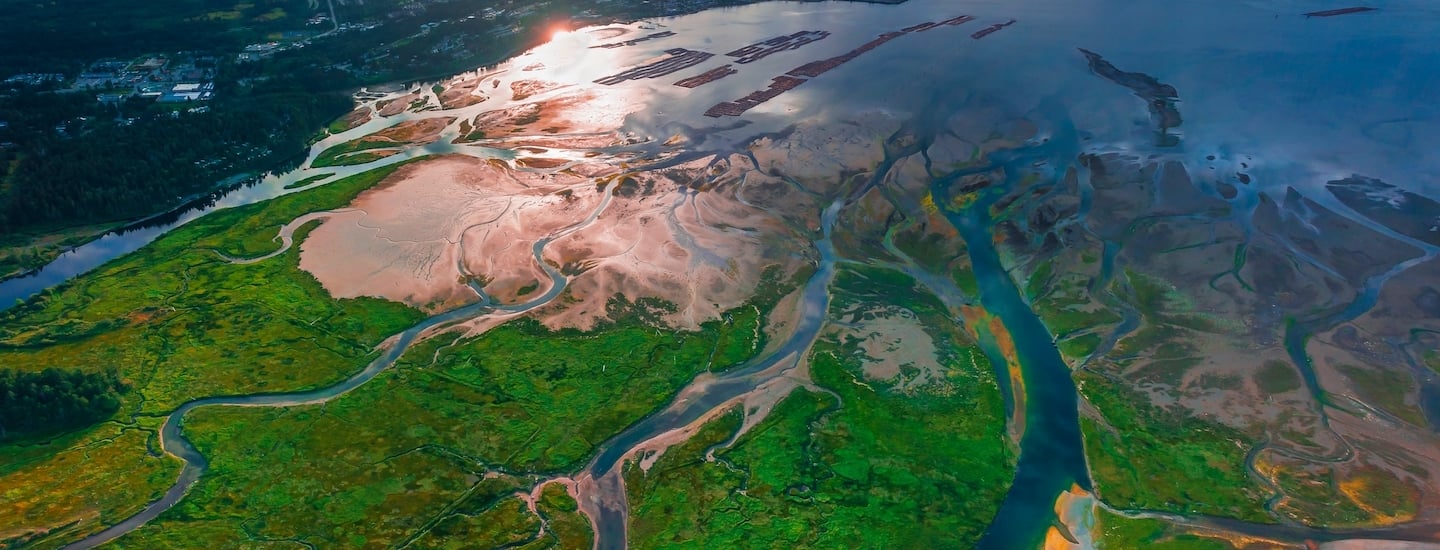
As our seas continue to rise, drowning wetlands and beaches, damaging critical infrastructure and threatening communities, government agencies finally look seriously at coastal adaptation and resilience options.
This December Surfrider presented at the Restore America's Estuaries Coastal & Estuarine Summit in New Orleans. Surfrider staff shared resources on an often overlooked hazard of climate change- exposed, damaged and overwhelmed wastewater infrastructure, which leads to sewage pollution at the beach. The resources shared included infographics, animations and blogs that Surfrider uses to: 1) help educate communities, homeowners and decision makers about how sewage pollution gets to the beach; 2) to inspire action to stop pollution at the source; and 3) to encourage people to think more critically about the wide-reaching impacts of climate change.
This topic of coastal hazards and the need for better resilience planning due to exacerbated climate change was a theme throughout the 500 presentations that took place over the week-long conference. Louisiana is losing coastal wetlands at an unprecedented rate, on track to lose one million acres by 2040 due to a mix of sea level rise and sediment disruption from human development and infrastructure. Mangroves struggle to rebound after extreme weather events and record-breaking hurricanes over the past five years. Coastal infrastructure and buildings are losing ground due to rising seas and erosion, resulting in homes falling into the sea and public transit lines getting shut down.
This unfortunate destruction has led to a shift in acknowledgment that inaction and conducting business as usual are simply no longer options. Yet the actions that are taken and decided upon now will dictate the future of our coastlines. If we continue to allow for maladaptive coastal protection methods like seawalls and massive floodgates, our beaches won’t stand a chance. Sandy coastlines will be drowned out by “coastal squeeze”, lost between rising seas on one side and hardened steel and concrete on the other. New development in high hazard areas including beachfront, cliffside and infilled wetlands will put more people at risk, and likely cost taxpayer dollars to inevitably pay for damage or protection through endless beach fill.
Fortunately, more proactive, resilience-building coastal adaptation methods are finally getting the attention they deserve. Protecting and restoring blue carbon ecosystems, such as coastal wetlands and mangroves, are seen as a critical tool in the fight against climate change. Not only do these systems sequester carbon dioxide ten times faster than tropical forests, they also store carbon deep underground for hundreds to thousands of years, acting as a critical carbon sink. Meanwhile, these systems are rich in biodiversity, providing important habitat for coastal wildlife. They also help mitigate impacts from storms by diffusing wave energy and protect clean water by filtering out stormwater pollutants. Allowing these ecosystems to be lost, be it to development or sea level rise, means releasing these stored emissions back into the atmosphere, turning them from a sink to a source of greenhouse gas emissions.
Recent federal investments through the Infrastructure Investment Jobs Act and Inflation Reduction Act, with support from federal agencies like NOAA, are providing record funds to research, restore and enhance these ecosystems. National and state efforts are underway to conduct blue carbon accounting and mapping to ensure that benefits from blue carbon ecosystems are included in greenhouse gas emissions inventories. Surfrider has long been advocating for this shift towards resilience building and focus on coastal restoration, and is grateful for these investments and the proactive projects to come.
That said, we must also work to provide space for these ecosystems to migrate as seas continue to rise. Blue carbon restoration projects must be accompanied with upland protections, managed retreat of infrastructure that could impede that upland migration and, most of all, the immediate halt of any intentional degradation and infill for the pure sake of coastal development.
There is no one cure all when it comes to coastal adaptation and resilience building, but protection of blue carbon ecosystems paired with managed retreat, greenhouse gas emission reductions and more thoughtful development practices that put people and communities out of harm’s way, will help ensure the future of natural coastlines and critical habitat for coastal and marine life.
To learn how your state is doing in regards to coastal development, sea level rise planning and shoreline protection approaches, check out Surfrider’s 2022 State of the Beach Report.
